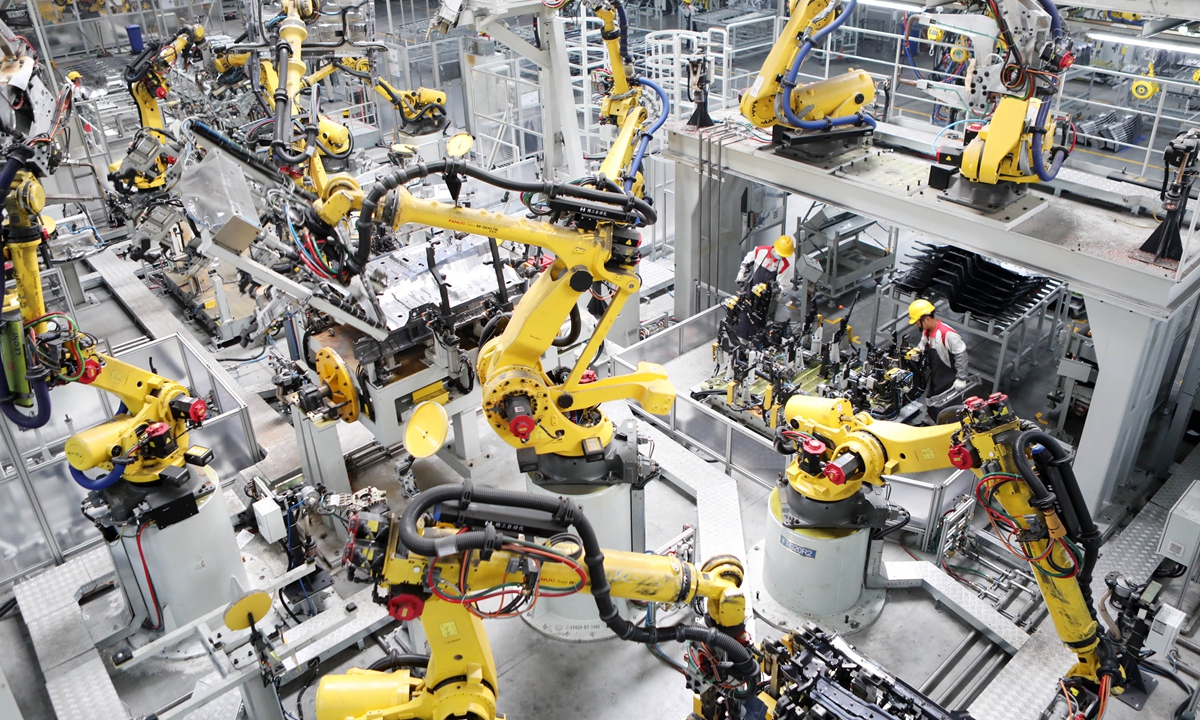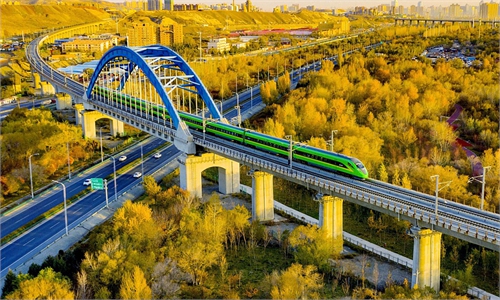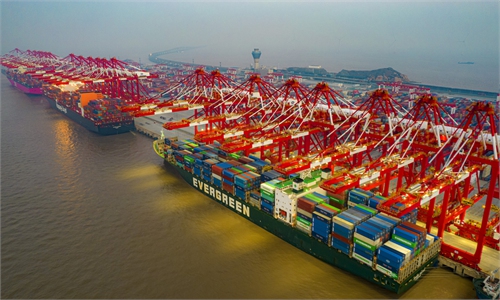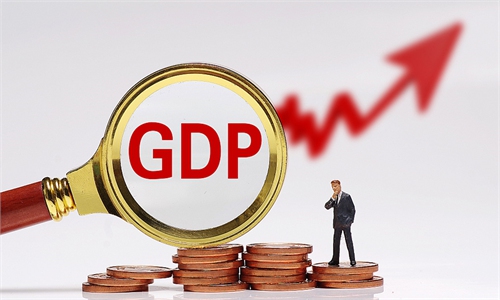Many Chinese localities aim for 6%-plus growth despite downward pressure
Confidence arises from infrastructure projects: experts

Workers at an auto production base in Southwest China's Chongqing Municipality Photo: cnsphoto
Nine Chinese provincial-level regions have set their GDP growth targets at above 6 percent for 2022, a level that economists said would be medium-to-high speed among economies around the world and of high quality, considering China's large economy.
Against the backdrop of growing downward pressure on the Chinese economy in 2022, the growth targets of above 6 percent from many localities underscored a resounding level of confidence among policymakers.
The target won't be too difficult to achieve, despite multiple challenges such as the COVID-19 pandemic, analysts said, noting that local governments might bet on a consumption rebound to achieve their goals.
So far, nine provinces have set their 2022 GDP growth targets at above 6 percent. Southwest China's Tibet Autonomous Region set this year's GDP growth target at about 8 percent, while East China's Anhui and Jiangxi provinces set their targets at above 7 percent.
Other provinces that have set targets of more than 6 percent include North China's Hebei, Southwest China's Sichuan and Central China's Henan.
Northwest China's Shaanxi Province, which was recently hit by a wave of COVID-19 cases, set this year's target at about 6 percent, while Beijing and Chongqing municipalities set targets below 6 percent.
Many expect the Chinese economy to grow above 5 percent in 2022, while some economists interviewed by the Global Times said that a growth rate of 6 percent in 2022 is also possible.
"In global terms, six percent would be a medium-to-high growth rate. It is also a high-quality, high-standard growth pace, considering China's economic size and GDP basis last year," Dong Dengxin, director of the Finance and Securities Institute at the Wuhan University of Science and Technology, told the Global Times on Wednesday.
Data released by the National Bureau of Statistics showed that China's two-year average GDP growth rate was 5.1 percent in 2021.
Dong said that slightly slower growth rates may become "normal" in China in the next few years, as the country shifts focus from high-speed growth to quality and stable growth.
Lin Jiang, a professor of economics at Lingnan University College at Sun Yat-sen University, also said that 6 percent growth has become a sort of "psychological bottom line" in China, and a rate of less than 6 percent might make some people worry about the nation's economic outlook.
"Local governments' setting highly stable growth targets is helpful for stabilizing overseas trade and stimulating the private sector, prompting investors to keep a relatively optimistic outlook on the future," he said.
According to data released by local governments recently, most provinces that have disclosed 2022 GDP growth targets outperformed their 2021 targets, including Beijing, Sichuan and Chongqing.
The local governments' confidence in setting relatively high growth targets comes from a consumption rebound as well as mounting infrastructure investment, experts said.
"China's domestic demand kept up its expansion since the third quarter last year, despite slowing real estate investment. This, plus policy support and China's effective pandemic prevention, has given confidence to local governments," Zhou Maohua, an analyst at Everbright Bank, told the Global Times.
Lin said that with downward pressure on the real estate sector and the fiscal situation, local governments are betting on consumption to be the pillar of this year's economic growth.
"The 6 percent target is reasonable, but might not be easy to achieve for certain provinces, considering the challenges, but local governments should also have some pressure in pushing an economic rebound," Lin said.
Dong said that the "split" of supply chains arising from US sanctions might pose some challenges to China's manufacturing industry, but the implementation of a number of infrastructure projects since late 2021 would inject momentum into this year's economic situation.




